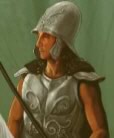Forum
Welcome Guest |
|
|---|---|
 Author Author |
Topic: |
|---|
| thranduillion |
|
||||||||
| cirdaneth |
|
||||||||
| Gandolorin |
|
||||||||
| thranduillion |
|
||||||||
| thranduillion |
|
||||||||
| tarcolan |
|
||||||||
| Elthir |
|
||||||||
| Gandolorin |
|
||||||||
| tarcolan |
|
||||||||
| Elthir |
|
||||||||
| tarcolan |
|
||||||||
| Gandolorin |
|
||||||||
| Elthir |
|
||||||||
| Gandolorin |
|
||||||||
| Members Online |









 The Arkenstone - What is it really?
The Arkenstone - What is it really?






